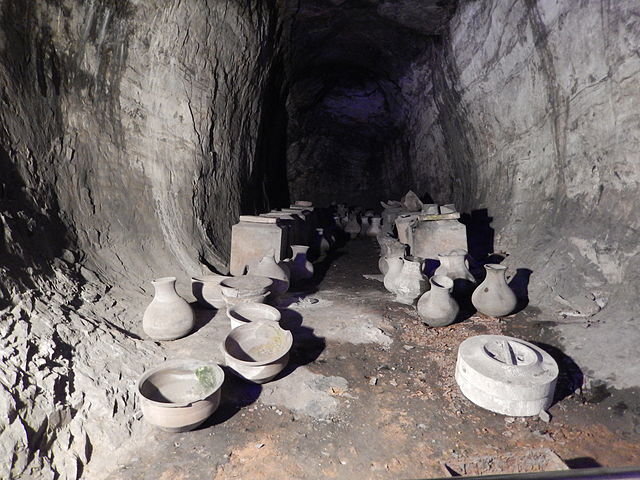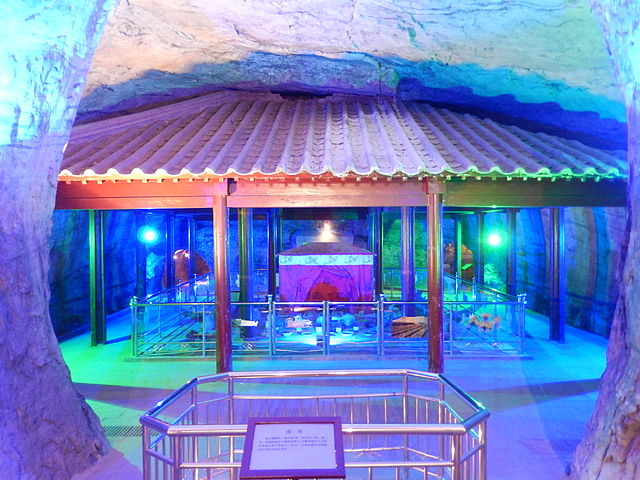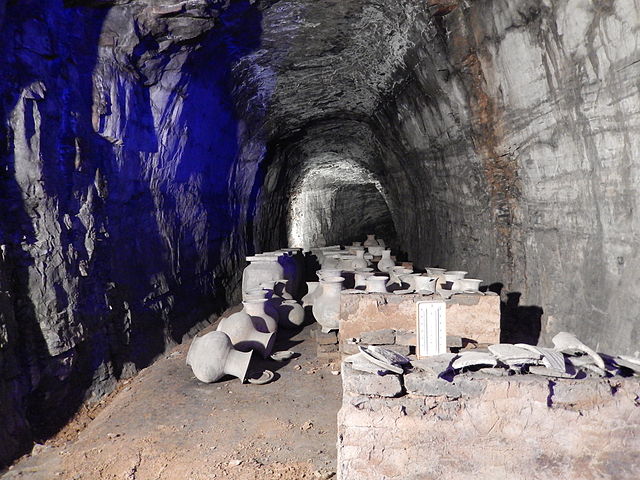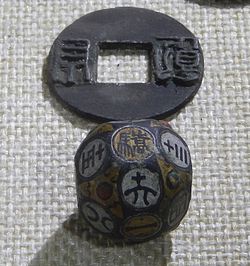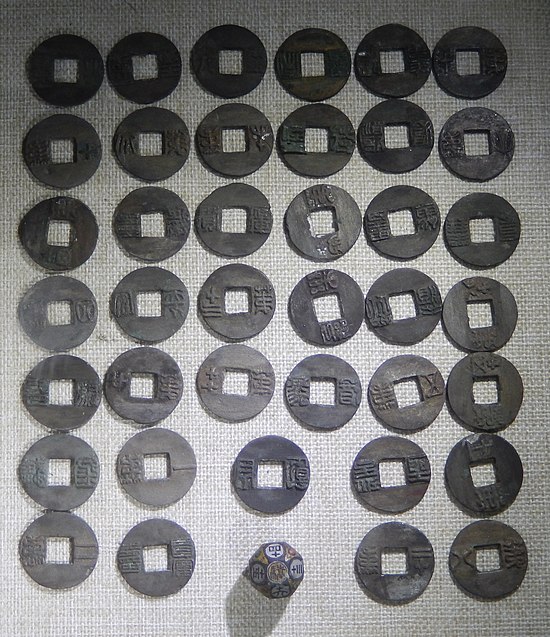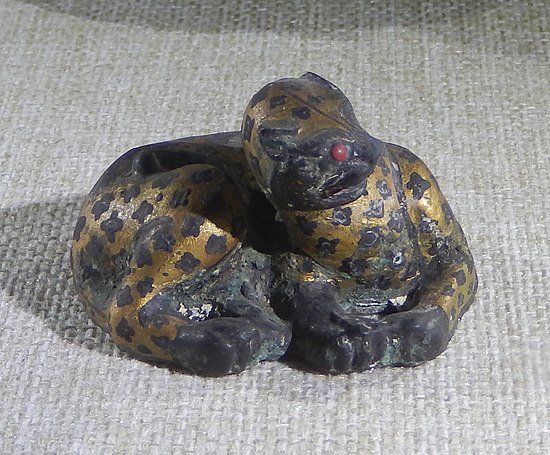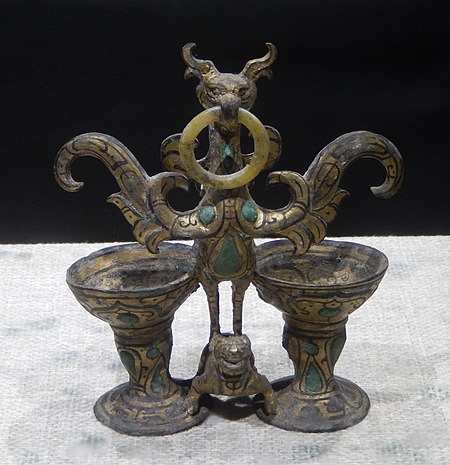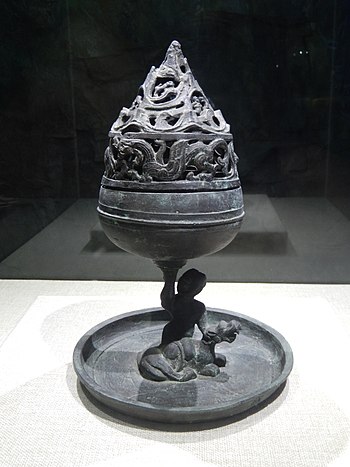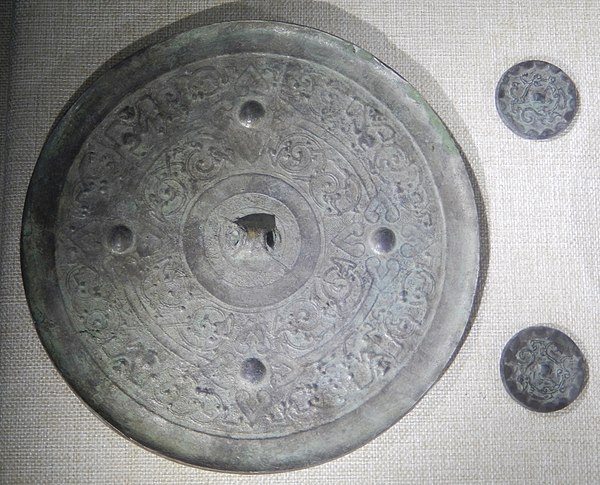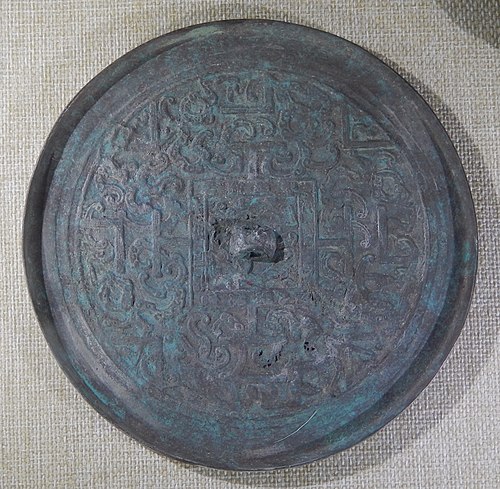Diary of a Rambling Antiquarian
Friday, 13 December 2013
Mancheng Han Tombs
Leaving the Ancient Lotus Pond in Baoding, we drive north then east to the town of Mancheng 滿城, which was the seat of local government for fifteen years after Baoding was abandoned in 1214. On the map, it looked as if Mancheng was just a few minutes drive away, but it takes us half an hour to reach our destination.
Entrance ticket for the Han tombs at Mancheng
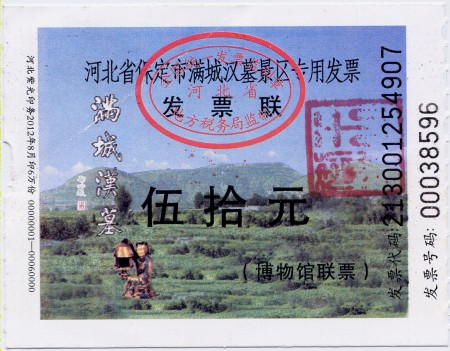
On the western outskirts of the town is a triple-peaked hill, aptly named Mausoleum Hill (陵山), an outlier of the eastern edge of the Taihang Mountains. During the Jin and Yuan dynasty, Baoding was considered to be an important strategic location, defending the capital from the south; and 800 years later, it was still considered a strategic location, and so in 1968 a construction unit from the People's Liberation Army was deployed to dig secret anti-aircraft positions into the sides of the hill. On 22 May 1968, the PLA had dug a tunnel 50 m into the east side of the central peak, but when they set off another blast the sound of the explosion was dull and echoey. When the dust had cleared, they found that they had blasted their way into a cave filled with pottery vessels, rotting wood, lumps of stones, and pieces of bones. Two days later archaeologists were sent to investigate, and they confirmed that the PLA had blasted into the side chamber of an ancient tomb dug into the mountainside. The following month Chairman Mao and Zhou Enlai were informed of this important archaeological discovery, and Zhou Enlai approved its excavation. Exactly two months after its discovery, on 22 July, Guo Moruo, as President of the University of Science and Technology of China, paid a visit to the site, and archaeologists were able to confirm that this was a Western Han tomb belonging to Liu Sheng 劉勝, Prince Jing of Zhongshan (died 113 BC). Sometime later, the tomb of Liu Sheng's wife, Dou Wan 竇綰, was discovered 120 m to the north. Neither tomb had been robbed, and a wealth of precious goods were discovered in the tombs, including jade burial suits for the prince and his consort.
We did not have a lot of time available to us, so instead of walking up the mountain as I would normally prefer, we cheated and went up to the Han tombs in a gondola lift.
Tomb of Liu Sheng
Plan of the Tomb of Liu Sheng
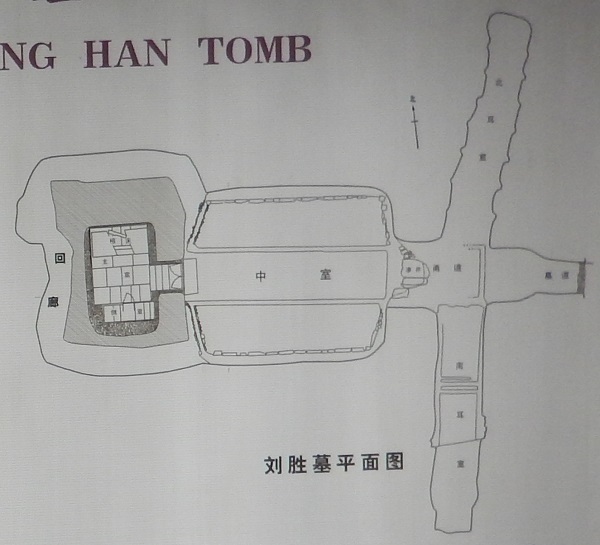
[From an information board]
The PLA tunnel broke into the South Ear Chamber
Entrance to the tomb of Liu Sheng
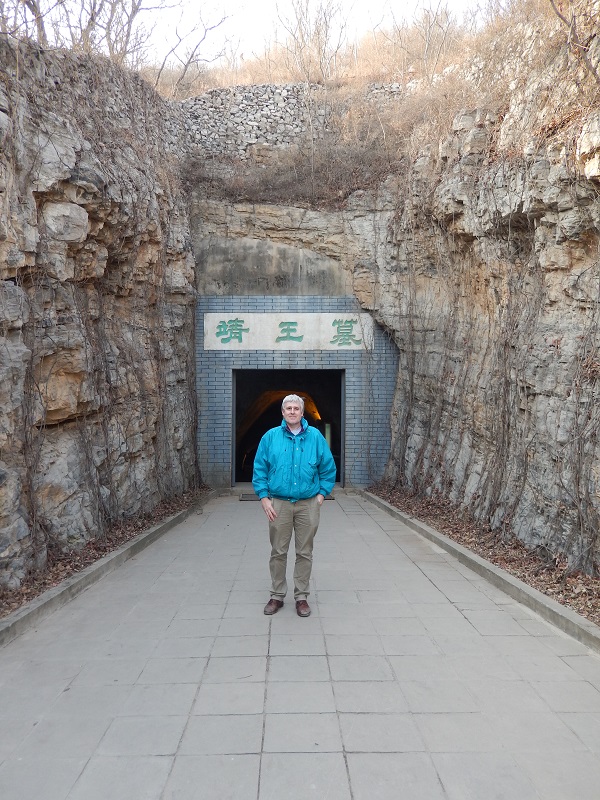
Me standing at the entrance to the tomb of Liu Sheng {© Chen Zhuang, 2013}
North side chamber of the tomb of Liu Sheng
Reconstructed room in the central chamber of the tomb of Liu Sheng
There were relatively few objects from the tomb of Liu Sheng on display, including his jade suit, but these are probably all replicas as the genuine articles are extremely valuable, and are kept in the National Museum of China in Beijing and in other museums.
Objects on Display at the Tomb of Liu Sheng
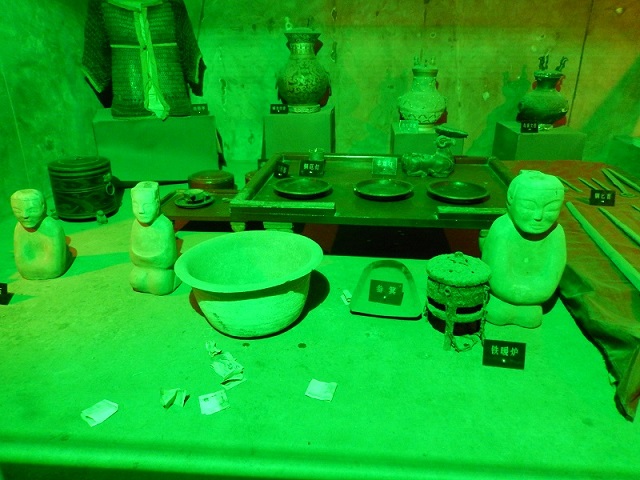
Replica Jade Suit of Liu Sheng
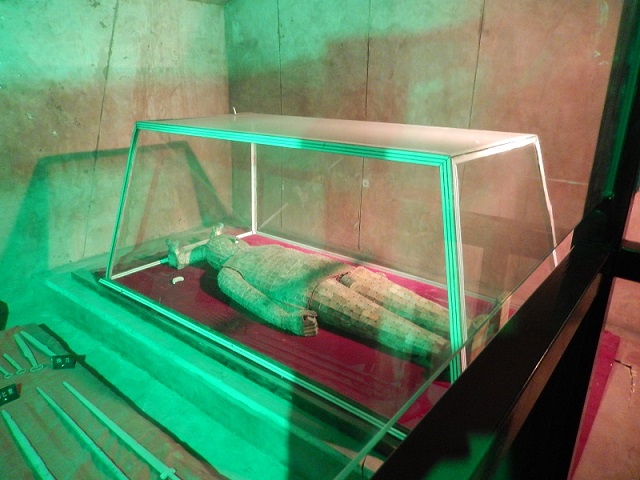
Tomb of Dou Wan
Plan of the Tomb of Dou Wan
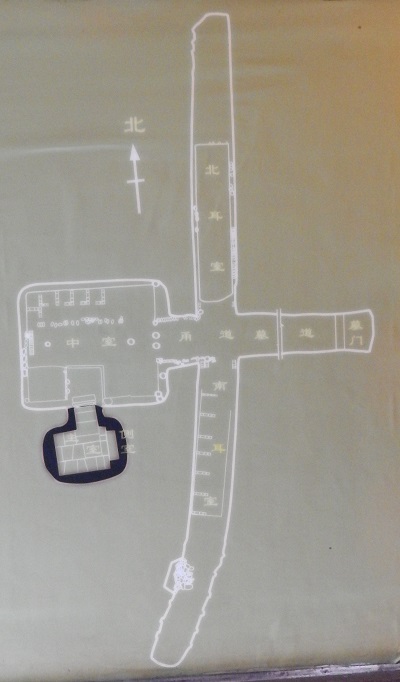
[From an information board]
Entrance to the tomb of Dou Wan
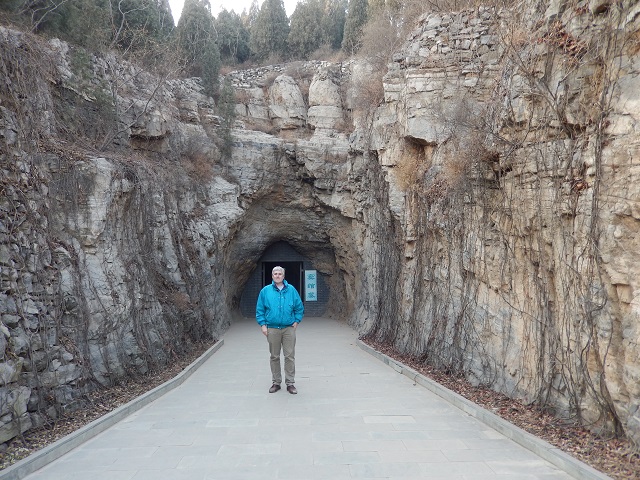
Me standing at the entrance to the tomb of Dou Wan {© Chen Zhuang, 2013}
South side chamber of the tomb of Dou Wan
Compared with the tomb of Liu Sheng, the tomb of Dou Wan had a relatively large number of objects on display, and these seemed to be better condition, and better protected, so maybe they are not all replicas (but they probably are).
Eighteen-sided dice
Sixteen faces are inlaid with the numbers one through sixteen, and the top and bottom faces are inlaid with the characters "驕" and "來酒" ("bring on the wine"). A similar 18-sided dice found in the Han tomb at Mawangdui has the characters "驕" and "畏妻" ("scared of your wife") on the top and bottom faces. The dice was used for a drinking game in conjunction with 40 coin-shaped bronze tokens.
Eighteen-sided dice and 39 coin-shaped bronze tokens
40 tokens were found, but one is not on display at the tomb museum. The tokens were used for a drinking game in conjunction with an 18-sided dice.
Bronze leopard inlaid with gold
Bronze bird with ring in its beak and two cups
Bronze incense burner
Bronze mirror and two miniature bronze mirrors
Bronze mirror
Sliding Down the Mountain
We were going to walk back down the mountain, but I saw that there was a rail slide down to the bottom of the mountain, and having never been on such a contraption before (I missed an opportunity to go on one at the Great Wall in Beijing in 2011) I persuaded Mr Chen to slide down the mountain with. It was great fun.
Arriving at the Bottom of the Mountain Rail Slide
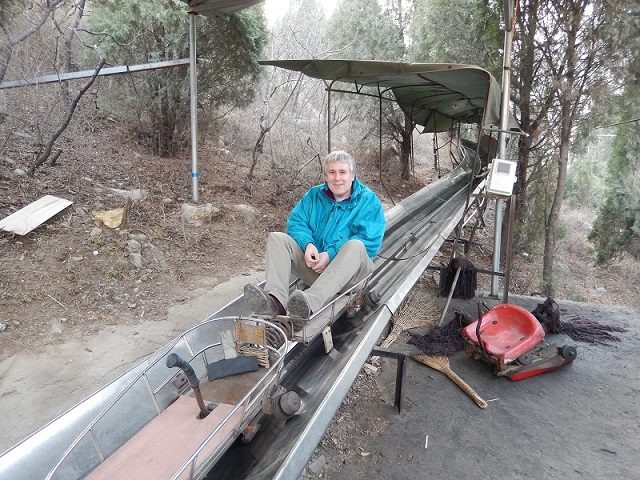
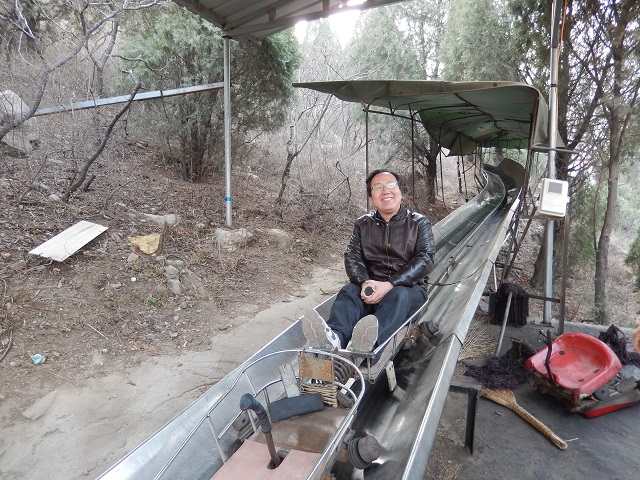
Me and Mr Chen arriving at the bottom of the mountain rail slide {photo of me © Chen Zhuang, 2013}
Han dynasty | Hebei | Tombs
Index of Rambling Antiquarian Blog Posts
Rambling Antiquarian on Google Maps
